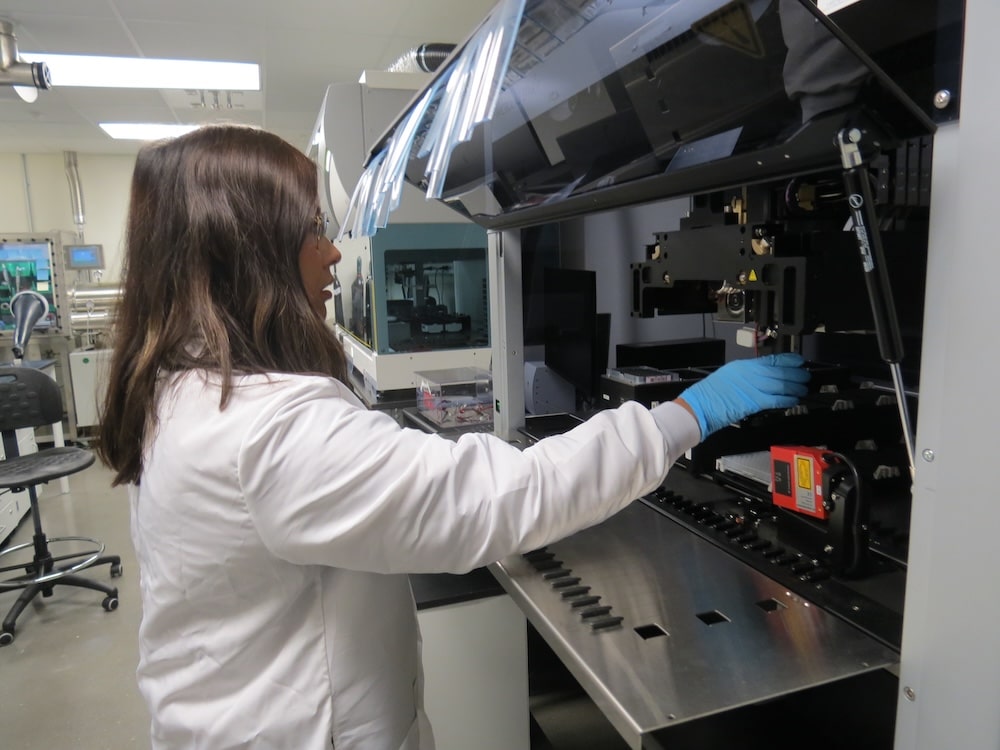The Perovskite Cookbook
Capturing energy from the sun using next-generation semiconductors that were designed by artificial intelligence sounds like the plot of the next hit science fiction series.
For Sheryl Sanchez, a PhD student in Assistant Professor Mahshid Ahmadi’s lab, it’s a goal within reach.
Sanchez works with perovskites, polycrystalline thin films materials with exceptional promise for technologies like LEDs and solar panels. These films can be made with a vast number of different elements and molecules, which can be combined in a range of ratios.
“It’s a vast and complex compositional space with nearly endless combinations to explore,” Sanchez said, “which gives us a lot of opportunities to optimize these materials for different purposes.”
Unfortunately, that also means that making a new perovskite with certain properties is like making a cake without a recipe.
“Developing new perovskites involves sorting through hundreds of material combinations and understanding how small changes affect functionality,” said Ahmadi.

If that weren’t challenging enough, some of perovskites’ most desirable properties don’t have a linear relationship with their compositional ratios—like how a small amount of salt is needed to make a cake, but adding even more salt does not make the cake better. How can you figure out the right amount of salt without baking hundreds of cakes?
Sanchez, who holds a bachelor’s degree in chemistry and a passion for coding, turned this problem into an opportunity.
“Machine learning (ML) and artificial intelligence (AI) are very powerful tools that can accelerate our discovery and understanding of material systems,” she said.
Sanchez introduced her team’s algorithm, which integrates experimental data and physics theory to identify promising perovskite ‘recipes,’ at the 2024 Materials Research Society (MRS) Fall Meeting and Exhibit last December. She was also awarded the Best Graduate Presentation Award for her symposium section.
“This award is an incredible honor and recognition for me, and a testament to the support I’ve had from my team and Dr. Ahmadi,” said Sanchez. “It also validates that what I’m doing is important—that integrating physics-based machine learning methods can have a big impact on automation in material science.”
An Algorithm that ‘Knows’ Physics
When Sanchez started looking for graduate schools, she had never heard of perovskites; she just knew that she wanted to apply her understanding of ML and AI to energy technologies like solar panels.
“The University of Tennessee has a strong research environment in material science, and Dr. Ahmadi’s group particularly focuses on high-throughput synthesis and ML methods for material discovery,” Sanchez said. “Her focus on accelerating research, discovery, and optimization was what really drew me in.”
Many ML models are purely data-driven; they use a library of known relationships to predict the result of a new input. That means the lack of empirical data on perovskites—the same issue that makes them great candidates for ML optimization—also makes them tricky to create an algorithm for.

Sanchez and her team took a novel approach, creating multiple physical models based on empirical data from published papers. They incorporated these models alongside empirical training data, making an algorithm that ‘understands’ the physics of perovskites with unprecedented accuracy.
“Incorporating that domain knowledge allows our algorithm to fit the data quicker and discover the underlying physical relationships faster,” said Sanchez.
Sanchez’s First ML-Designed Perovskite
Based on simulated experiments, the new algorithm has already identified a few perovskite compositions with meaningful improvements in desirable traits. When Sanchez’s team made these new compositions, their empirical data matched the algorithm’s predictions.
In other words, the algorithm had successfully predicted the ‘recipe’ for a useful novel perovskite.
“Sheryl has played an essential role in applying diverse machine learning methods for data analysis, experimental decision-making, and intelligent control of our robotic platforms, letting us focus on the most promising materials,” said Ahmadi. “More than just speeding things up, ML helps us make thoughtful, data-driven choices.”
Sanchez has big plans for expanding her material discovery algorithm. First, she hopes to incorporate it into in situ spectroscopy, which allows scientists to observe a perovskite’s crystallization dynamics, photoluminescence, and other characteristics while it is being created. With that highly detailed data, the algorithm could suggest ways to optimize a perovskite’s synthesis as well as its composition.
Sanchez also looks forward to expanding the algorithm’s capabilities so it can optimize even more complex materials.
“I’m very grateful to Dr. Ahmadi for helping me develop my research applying machine learning to high-throughput synthesis,” Sanchez said. “I really believe that the combination of automation, machine learning, and high-throughput characterization is the future of material discovery.”
Contact
Izzie Gall (865-974-7203, [email protected])
